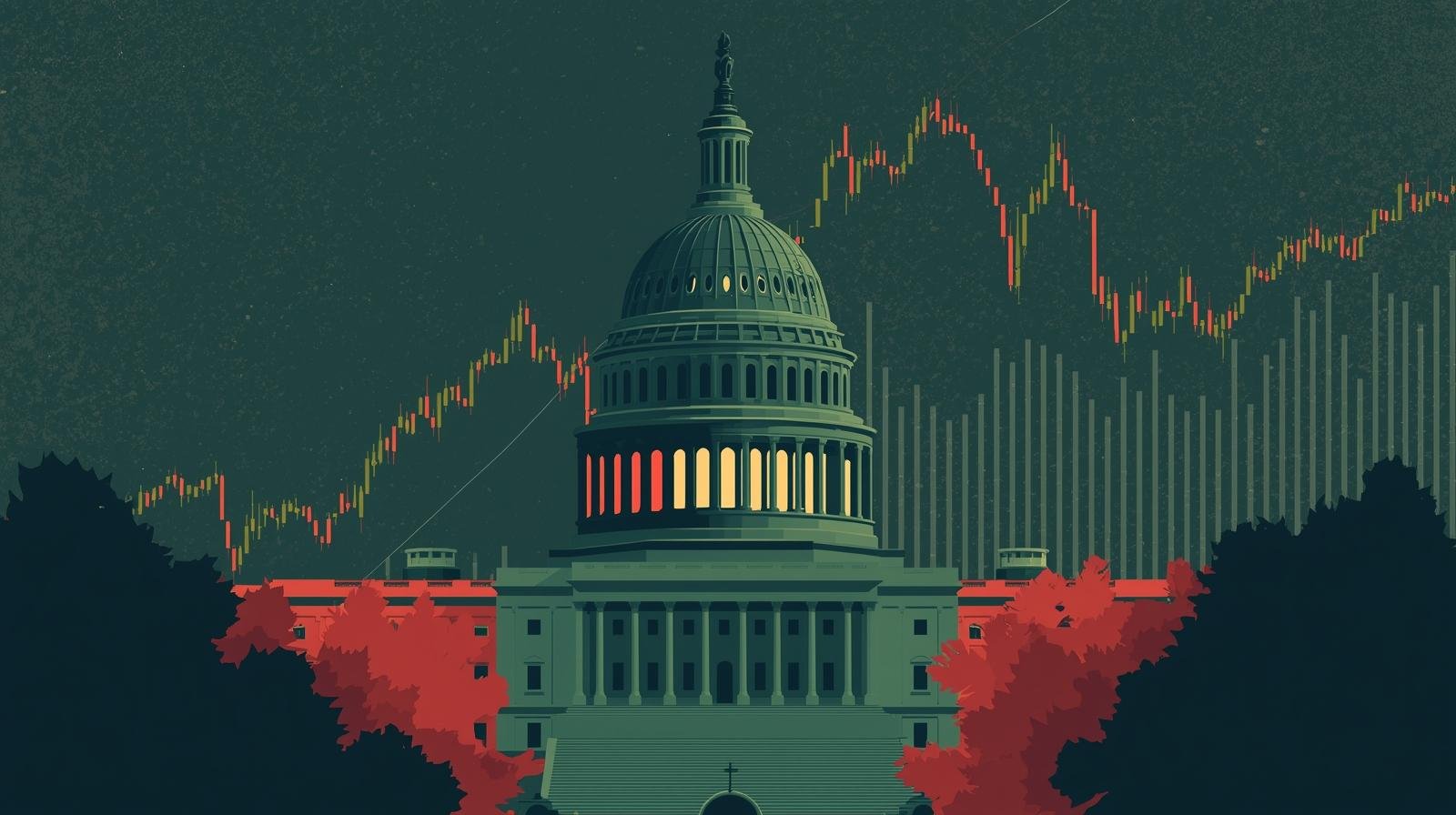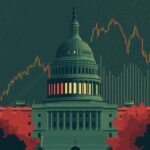Government Shutdowns, Explained: What They Are, Why They Happen, and How Markets React
As of October 1, 2025, the U.S. federal government is in a shutdown. On October 8, the IRS announced furloughs for more than 34,000 employees—about 46% of its workforce—shrinking call-center capacity just as extension filers scramble to wrap up taxes. Meanwhile, the S&P 500 has been setting fresh highs, closing at 6,753.72 today before a modest pullback—an apparent paradox that raises a practical question: do shutdowns really move markets? (The Guardian, AP News)
What is a government shutdown?
In the U.S., federal agencies need money authorized by Congress—typically through 12 annual appropriations bills. When those bills (or a temporary stopgap known as a continuing resolution) don’t pass, funding lapses. Under the Antideficiency Act, agencies must halt most non-essential operations until Congress acts. Essential functions continue, and mandatory programs (like Social Security) generally keep running, but many services slow or stop. (CRS Report)
Before the early 1980s, brief funding gaps didn’t necessarily shut down operations. That changed after a set of legal opinions by Attorney General Benjamin Civiletti, which established that work must cease when appropriations lapse, except for narrow exceptions (e.g., protecting life and property). Those opinions created the modern shutdown playbook. (DOJ Historical Memo)
What happens to federal employees?
Workers fall into three buckets: (1) excepted/essential employees who keep working, (2) exempt employees funded by non-annual appropriations, and (3) furloughed employees placed in non-pay, non-duty status. In this shutdown, the IRS’s updated contingency plan retains about 53.6% of staff (≈39,870 of 74,299) and furloughs the rest—concentrated in call centers, IT, and HQ functions. (IRS Contingency Plan 2025)
Do furloughed workers get back pay? Since 2019, the Government Employee Fair Treatment Act provides for retroactive pay after a lapse ends. Bottom line: historically, Congress has paid workers after the government reopens. (S.24 – Government Employee Fair Treatment Act of 2019)
Why do shutdowns happen?
Shutdowns reflect political deadlock more than fiscal incapacity. Congress and the White House may disagree over total spending levels, specific program priorities, or policy “riders” attached to funding bills. When neither side compromises by the deadline, the clock runs out. Sometimes continuing resolutions bridge differences; other times, brinkmanship prevails.
Because shutdowns are about leverage, the duration often depends on how quickly the political costs mount versus the perceived negotiating gains. History shows many short gaps with minimal disruption, but a handful of longer shutdowns—like 2018–19’s 35-day episode—meaningfully affected operations and the economy. (Wikipedia)
How shutdowns affect the economy
Think of shutdowns as a temporary kink in the hose rather than a broken pipe. Many effects are delayed (spending resumes later) rather than permanently lost. But the longer the kink, the worse the garden looks. Here are the main channels:
- Reduced federal activity and procurement. Agencies pause grants, slow contract awards, and delay reimbursements. Contractors may cut hours. The Congressional Budget Office (CBO) estimated the 2018–19 partial shutdown shaved at least $11 billion from output, with about $3 billion permanently lost. (CBO Report) — For a broader look at how debt markets absorb these disruptions, see our corporate bond explainer.
- Data darkness. If agencies like BLS and Census suspend releases, investors and the Fed lose timely inputs (jobs, CPI, trade). Less visibility can lift risk premia and spark volatility around policy meetings. (Politico) — Learn how data scarcity impacts rate policy in our post on Fed decisions and yields.
- Income effects. Hundreds of thousands of workers miss paychecks (temporarily). Private-sector activity tied to federal demand slows. Several current estimates peg the weekly GDP drag around 0.1 percentage point in Q4 2025 if the shutdown persists. (Morgan Stanley)
- Sentiment hits and delays. Political dysfunction can weigh on consumer and business confidence. (If you missed it, we explored investor behavior in The Psychology of Investing.)
Case study: The 2025 shutdown, week two
- IRS: About 46% of staff furloughed; call centers curtailed. (The Guardian)
- Back-pay debate: OPM guidance cites the 2019 law’s retroactive pay provision; a White House memo created confusion, but the legal baseline remains. (Reuters)
- Data releases: Several agencies are postponing regular statistical outputs, complicating near-term macro reads. (Politico)
- Macro estimates: Multiple shops flag a weekly GDP hit of about 0.1pp while the shutdown persists. (Morgan Stanley)
- Equities: Despite headline risk, the S&P 500 notched a fresh closing high of 6,753.72 today before a modest retreat. (AP News)
Risks to watch if the shutdown persists
- Duration: After ~2–3 weeks, income effects and procurement delays compound; contractors and state programs reliant on federal flows feel the pinch. Related read: Private Credit Moves Into Emerging Markets.
- Missing data: A blind Fed is a cautious Fed; uncertainty around the rate path can lift volatility.
- Credit markets: Watch corporate spreads — our bond outlook 2026 dives deeper into why fixed income is back in focus.
Bottom line (forward-looking)
Shutdowns are political tactics with economic side effects. In most cases, they’re temporary and markets look through them. In 2025, equities have continued to grind higher on AI-driven earnings and hopes for easier policy, even as Washington stalls. That’s your tell: for now, the macro regime beats the Beltway drama. If this shutdown extends into weeks and tangles with data gaps and slower procurement, expect more defensive rotations, choppier tape, and a bit more rate-path angst. But don’t mistake a budget standoff for a business-cycle turn.
Investor’s north star: Watch duration, data, and demand. If those three stay manageable, the market’s shrug makes sense. If they don’t, the shrug can become a flinch.
This article is for informational and educational purposes only. It does not constitute financial, investment, or legal advice.
All economic and financial policy discussions are presented for scenario analysis and illustration only. Investing involves high risk, and you may lose capital.
Always conduct your own independent research and consult a qualified professional before making any financial decisions.








